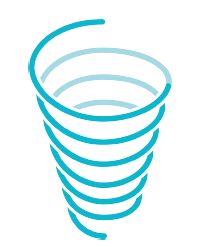Subject Leader: Miss R Peace
Computing Curriculum at King’s Meadow Academy
Intent
At King’s Meadow Academy we want all of our children to be equipped to have the necessary skills and knowledge about the on-and off- line world of computers that will remain with them for the rest of their lives.
In line with the National Curriculum the Kapow Primary Computing scheme, covering Reception to KS2, includes modern online safety training, equipping children for real-world digital challenges.
Hands-on learning with real apps ensures real-world readiness, and teacher CPD videos and teacher-written content make lessons engaging and reduce workload.
Implementation
We follow the ‘Kapow Primary’ scheme of work.
Their scheme of work fulfils the statutory requirements for Computing outlined in The National Curriculum (2014) and was created based on the principles outlined in the government’s ‘Education for a Connected World (2020).
The scheme has been divided into three strands:
- Computer Science
- Information Technology
- Digital Literacy
Within the strands the key areas that are taught are:
- Computing systems and networks
- programming
- creating media
- data handling
- online safety
Kapow Primary’s Computing scheme of work has been designed as a spiral curriculum with the following key
principles in mind:
✓ Cyclical: Pupils revisit the five key areas throughout KS1 and KS2
✓Increasing depth: Each time a key area is revisited, it is covered with greater complexity.
✓ Prior knowledge: Upon returning to each key area, prior knowledge is utilised so pupils can build on
previous foundations, rather than starting again.
E-Safety
The internet is a brilliant place for learning, speaking to friends and family, and playing games. However, it is very important to understand how to use it safely and how to deal with any problems you may come across. Staying safe when using the internet and other new technologies is known as E-Safety. Digital literacy is key to our teaching of computing as it teaches the importance of staying safe online and how they children do this.
Key to the school’s safeguarding policy is having a robust e-safety curriculum in place. As a result, we embed the teaching of e-safety throughout the whole curriculum and actively encourage children to practise being safe online.
Our internet is filtered appropriately via our IT provider, who continually monitors and updates blacklisted websites.
We promote the use of KIDSREX, SAFESEARCHFORKIDS, and SWIGGLE as child friendly search engines.
Children are actively encouraged to come forward if they think they have come across anything unsuitable online. The school’s safeguarding team also ensures their online safety knowledge is up to date through training and when issues do arise, they are dealt with quickly.
Esafety for Parents of the Under 5’s
National Online Safety – 7 Questions to use with your child
Parent Information Leaflet
Smartie the Penguin
ThinkuKnow
Watch with your child – ages 4 to 7 years – to learn about Esafety – Jessie and Friends
Watch with your child – ages 7 to 11 years – to learn about Esafety – The adventures of Kara, Winston and the Smart Crew
*Click here for further top tips to use to talk about e-safety with your child. These reinforce the message that we teach in school.*
Teaching Online Safety in School – DFE

